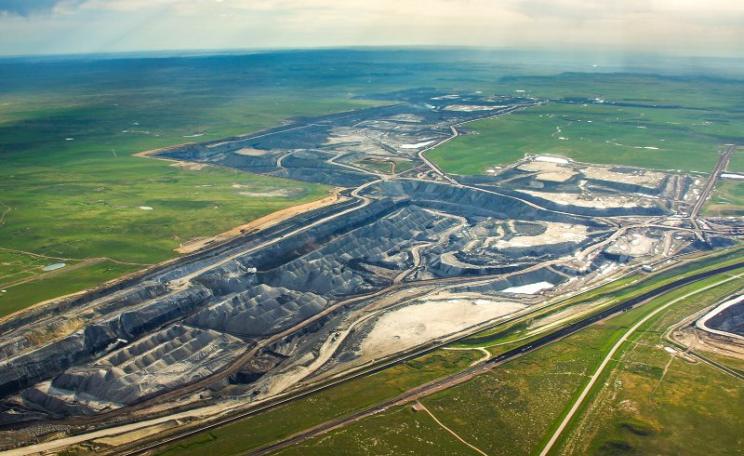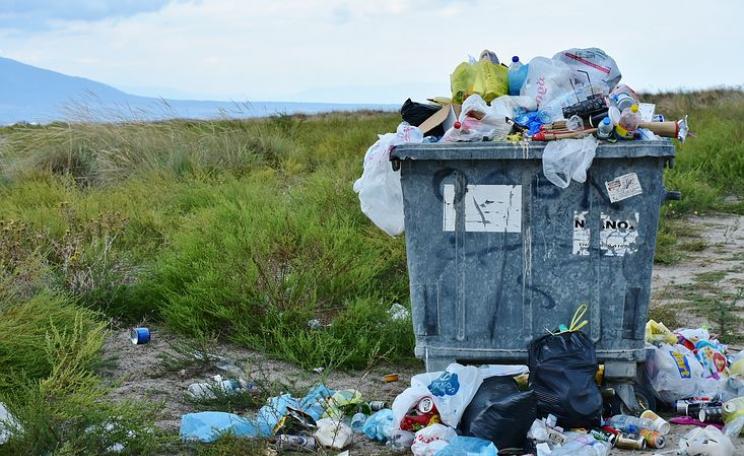Giant solar installations, like the 4,000 MW power plant planned for the desert state of Rajasthan, are a sure sign that a renewables revolution is underway – but is it too late for the climate?
Inter-governmental negotiations towards a new climate treaty are going precisely nowhere
So global warming is now "unequivocal" according to the latest IPCC report, global temperatures are at "unprecedented" levels - and human emissions of carbon dioxide and other greenhouse gases are the principal cause.
What practical difference will these findings make? None whatsoever. The global warming sceptics and deniers continue to claim that the entire science of climate change is a hoax and con-trick - perpetrated by an unholy alliance of liberal media, the Hollywood elite, profiteering scientists, and a power-mad United Nations intent on becoming a global government.
Perhaps more importantly, ever increasing volumes of coal, oil and gas are spewing out of the ground, thanks to the new momentum created by fracking and the development of novel oil resources like the tar sands of Alberta. The world has already burnt over half of the trillion tonnes of carbon that would give an average global warming of 2C by 2100, and on current trends this entire carbon budget will be used up within 25 years.
Meanwhile inter-governmental negotiations towards a new climate treaty are going precisely nowhere, and taking their time about it. Every major climate conference or "convention of the parties" delivers just enough hope to justify lurching on to the next - keeping negotiators in work, but delivering no discernible benefit for the climate.
Rajendra Pachauri, the chairman of the IPCC, is now making the case for a carbon tax, to give clean energy a market advantage against fossil fuels. "An extremely effective instrument would be to put a price on carbon", he says. "It is only through the market that you can get a large enough and rapid enough response." He is right - but his chances of getting agreement on a global carbon price lie somewhere between nil and zero. The Republican-dominated US House of Representatives alone rules out that possibility.
But can the market do the job without a carbon price? Or put another way, can clean, renewable energy compete against fossil fuels without a carbon price to tilt the field in its favour? Recent price falls, especially in solar PV, show that it can. An irreversible process is under way that will, over coming decades, make clean energy cheaper than dirty - but maybe not fast enough to save the the Earth's climate.
Inter-governmental negotiations towards a new climate treaty are going precisely nowhere
Solar power has its own version of Moore's law (which famously states that computer processing power doubles every 18-24 months). Until 2009, solar modules got about 7% cheaper per year for 30 years. The price then fell from over $2 per watt of generating capacity in 2009 to around $0.75 in 2013. These price falls reflect huge increases in the scale of manufacturing and investment, which brought better technology, economies of scale and increased competition.
These principles underlie Swanson's law, named after the founder of US solar giant SunPower, which states that solar prices fall by 20% with every doubling in manufacturing capacity. So the faster the world builds and installs solar power, the faster the price drops. And the lower the price, the greater the demand ...
As the price reaches key tipping points, new markets open up. For example, replacing diesel generators in remote locations. Take India: solar PV generates 1.8kWh (kilowatt hours) per year per watt of capacity, and system installation cost has come down to $1.50 per watt for large installations, or $2 for smaller ones. Diesel generation costs about $0.75 per kWh. So a farmer's $500 investment in a small 250 watt solar system makes, every year, electricity that would cost over $320 if generated from diesel.
Solar power is also much cheaper to install than new coal fired capacity, which typically costs about $7-8 per watt, though more expensive than gas, at about $1.5-1.6 per watt. But with solar, the fuel is free! This explains why solar power is now moving firmly into the industrial mainstream. Only a few years ago a 100 megawatt (MW) solar power station was considered huge. Now India is planning a 4,000 MW solar power plant in the desert state of Rajasthan, its peak capacity dwarfing all but the largest coal fired stations.
Of course there is a drawback - solar PV only produces while the sun is shining. But there's plenty of daytime demand for power. In developed countries, that's when offices and factories are most busy. And in hot countries it's peak time for air conditioning. Moreover daytime coolth from solar power can easily be stored up for the night in tanks of icy water. The other solar power technology, CSP or concentrated solar power, works by focussing the sun's heat into fluids that drive turbines. But the heat can also be stored in underground rocks, and used to drive turbines on demand.
For solar power (and other renewables like wind) to completely take over electricity markets we still need new, cost-effective electricity storage technologies. But renewables are already cheap enough to be a sound investment in their own right, especially in the sunnier parts of the world: both replacing new fossil capacity, and displacing the output of existing fossil stations.
So how should those who accept the IPCC message concentrate their efforts? By doing all they can to promote and develop renewable energy. The World Bank says it will only fund coal developments in exceptional circumstances, and the European Investment Bank has applied a carbon standard to its fossil fuel investments. But they, and all the other multilateral investment banks, should get out of the fossil fuel business altogether and devote energy funding purely to renewables. This applies especially to the African Development Bank, which is financing massive coal development across the continent.
Governments should emulate Germany's Feed-In Tariff scheme for solar power, which has transformed the global market for solar power due to the huge increases in demand it created - at home and abroad, through their aid budgets. Companies, local authorities and government departments should exploit the renewable energy capacity of their land and buildings. And major retailers should get into the market - as IKEA already has. And we should support the ambitious "Sunpower" proposal recently made by David King and Lord Layard.
All these steps will increase the scale and speed of renewables investment, innovation, manufacture and deployment - and drive down prices, making renewable power all the more competitive. In ten years time climate negotiators will still be fretting over square brackets and trivial points of procedural detail. But with our well directed efforts, the renewables revolution will be well and truly rolling, and fossil energy will be on its way to the scrapheap.
Oliver Tickell writes about the environment. He is author of Kyoto2 (Zed Books, www.kyoto2.org)
| READ MORE... | |
 |
NEWS ANALYSIS Will the IPCC report spur U.S. policymakers to act? Ben Whitford says that despite the lack of coverage of the IPCC report in the US media and ongoing denial of the science from certain political quarters, climate change activists in the US are feeling motivated........ |
 |
NEWS ANALYSIS The forgotten crisis: Why is no one in Britain debating climate change? Alex Stevenson asks why, given the findings of the latest IPPC climate report, the issue of climate change does not appear to be on the priority lists of UK politicians............. |
 |
NEWS ANALYSIS Climate change? Try catastrophic climate breakdown The message from the IPCC report is familiar and shattering: it's as bad as we thought it was, says George Monbiot |
 |
NEWS ANALYSIS Renewable Revolution or Nuclear Nightmare? The rapid spread of solar power across China, India, Africa and Latin America is being driven not by subsidy but by the market |
 |
NEWS ANALYSIS Frontline Online: South America forges ahead with renewables The Ecologist's Lorna Howarth reports on news and action from the environmental frontline.... |








